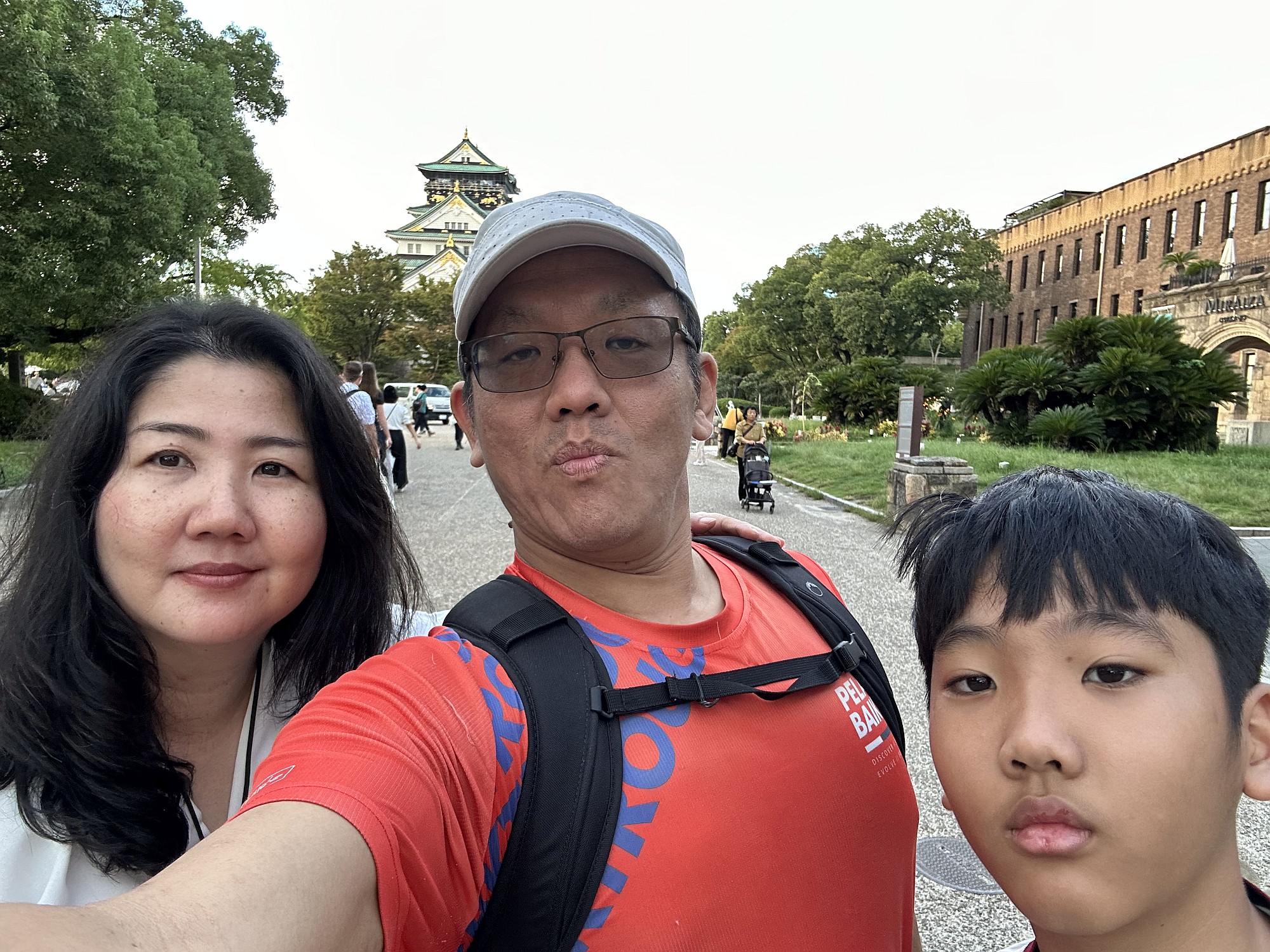Osaka Castle is one of the most significant castles in Japan’s history. The magnificent structure witnessed the tumultuous transition of the Japanese warring era into the Tokugawa Shogunate, and it held an important role during that period. I felt a sadness knowing that the original castle, first built in 1583, was destroyed during this transition. And although it was rebuilt during the Tokugawa Shogunate, the castle was again bombed and destroyed during World War II. Thankfully, the castle was restored in 1995 and has since been transformed into a museum.
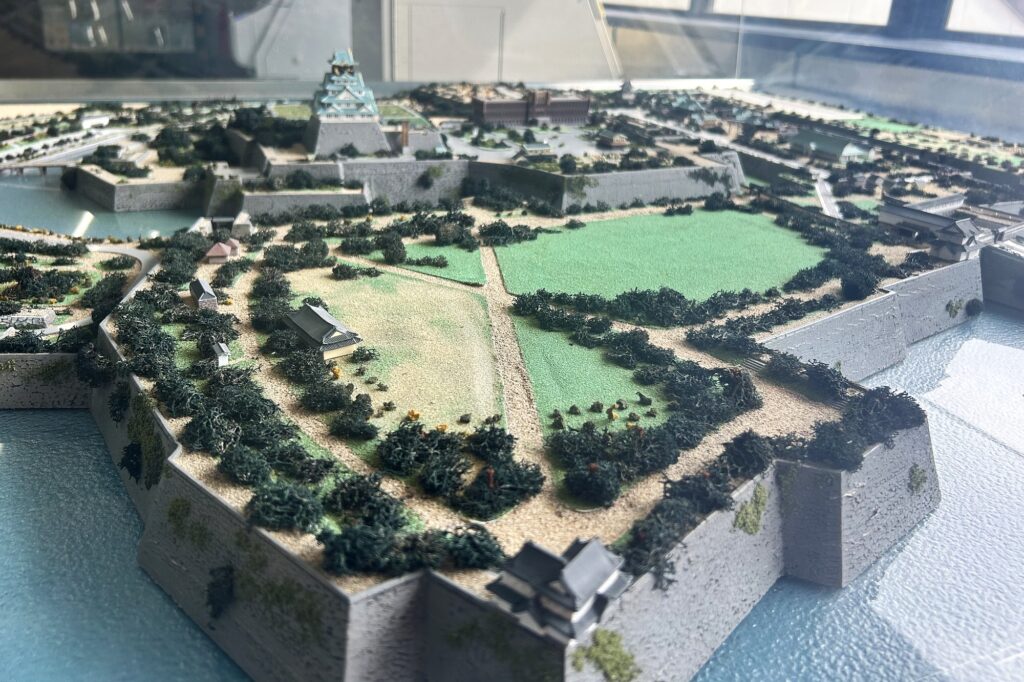
Approaching Osaka Castle: The Castle Park
Anticipation was high when we stopped at the JR Ōsakajō-kōen Station. Inside the station itself, we studied the detailed model of Osaka Castle. It looked big and tall, clearly divided into several defensive levels. Upon exiting the station, we walked through the sprawling green expanse of Osaka Castle Park, towards the first level of defense: the outer moat. This moat was a silent testimony to its original purpose, having been used for defense during the transition to the Tokugawa Shogunate. Now, visitors could take a boat to sail its waters, getting a closer look at the massive stone walls.
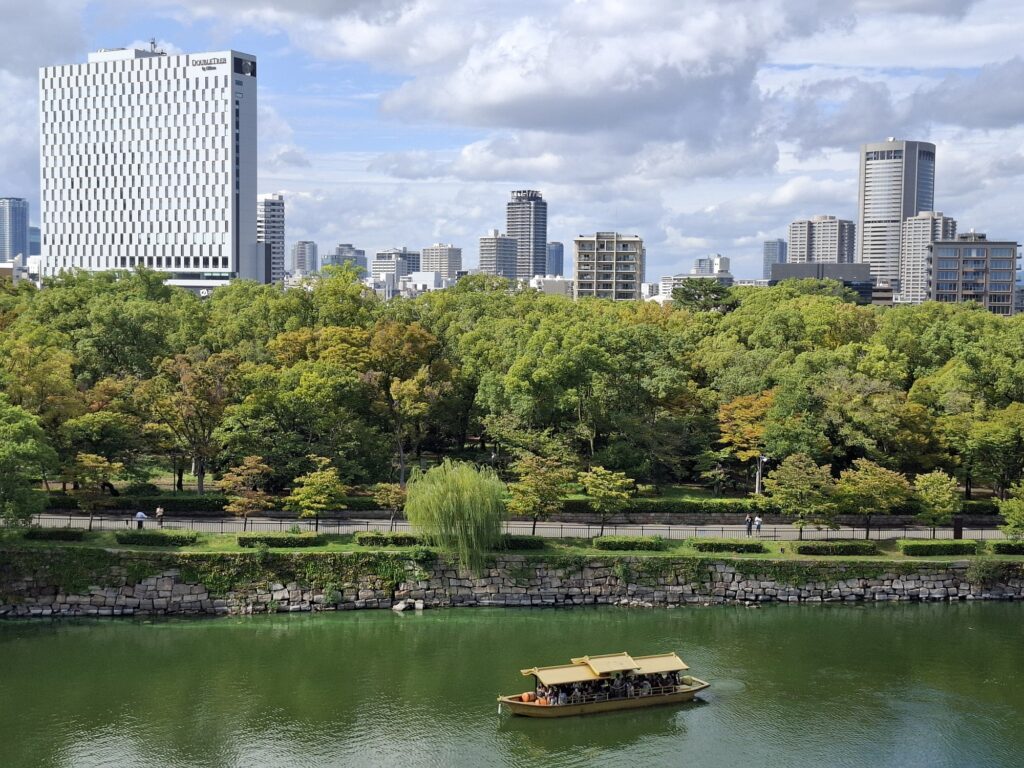
We walked past the outer moat’s massive defenses and entered the inner park. A lush canopy of green trees lined the path, instantly providing an atmosphere of deep shade and serenity. From this inner park, we could finally see the main Castle Tower looming high on top of the incredibly steep, rocky wall. To enter the final enclosure leading to the main castle, we had to climb a substantial set of stairs.
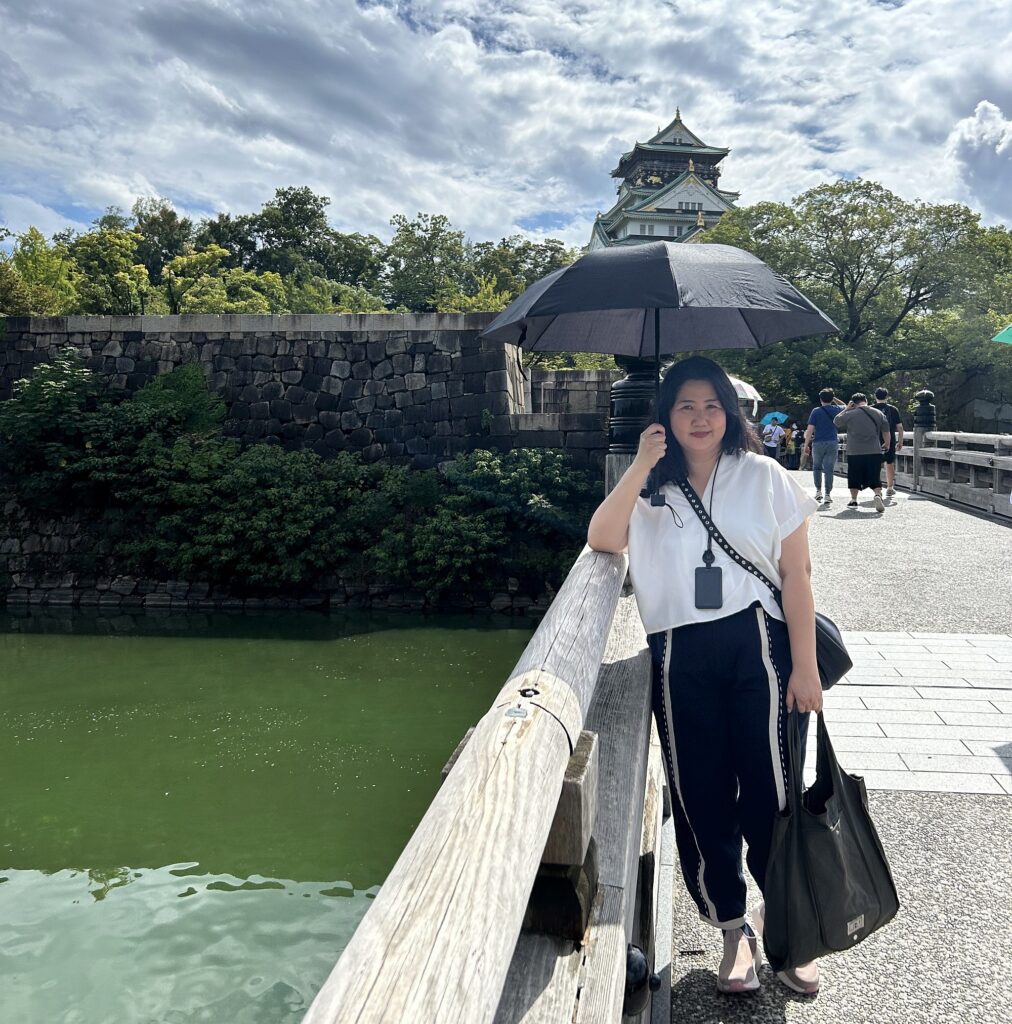
Osaka Castle Museum: A piece of history of Japan
The meticulous 1995 restoration successfully preserved the look of the castle’s outer façade. A painstaking attempt had been made to restore the exterior as close as possible to the magnificent version built by Toyotomi Hideyoshi. This effort included the roof tiles, where the gold-coated dragon-fish roof tiles glinted brilliantly under the afternoon sun—a dazzling symbol of the Shogun’s original power and extravagance.
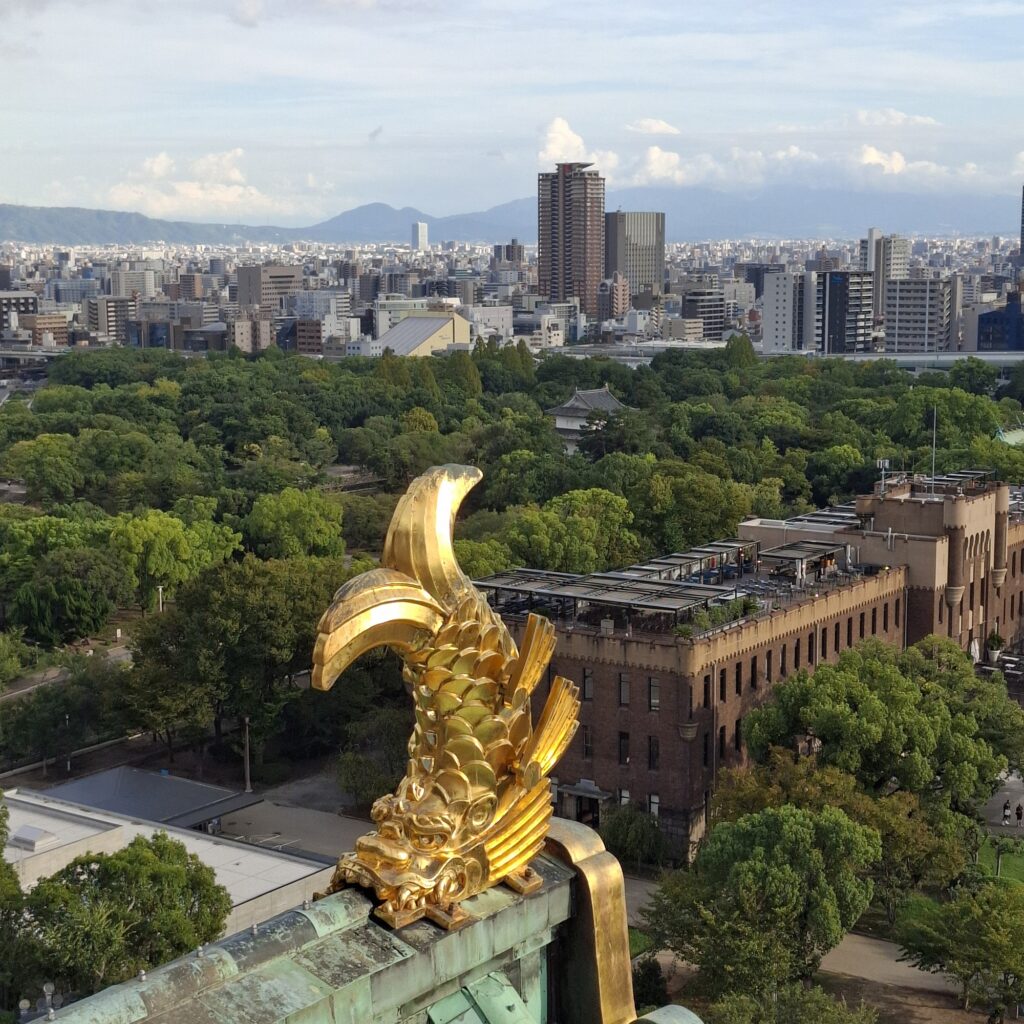
Inside, the castle was completely transformed into an eight-story modern museum, detailing the dramatic story of Japan’s unification under the legendary figures of Oda Nobunaga, Toyotomi Hideyoshi, and Tokugawa Ieyasu. Going through each floor felt like peeling back layer after layer of a massive historical epic, chronicling the turbulent days that led to the Unification of Japan under the Tokugawa Shogunate. The detailed displays captured my attention for hours as I immersed myself completely in this foundational piece of Japanese history: we saw original letters sent between these powerful leaders, vivid paintings that depicted the great Battle of Sekigahara, and the impressive battle armor that was worn by each side.
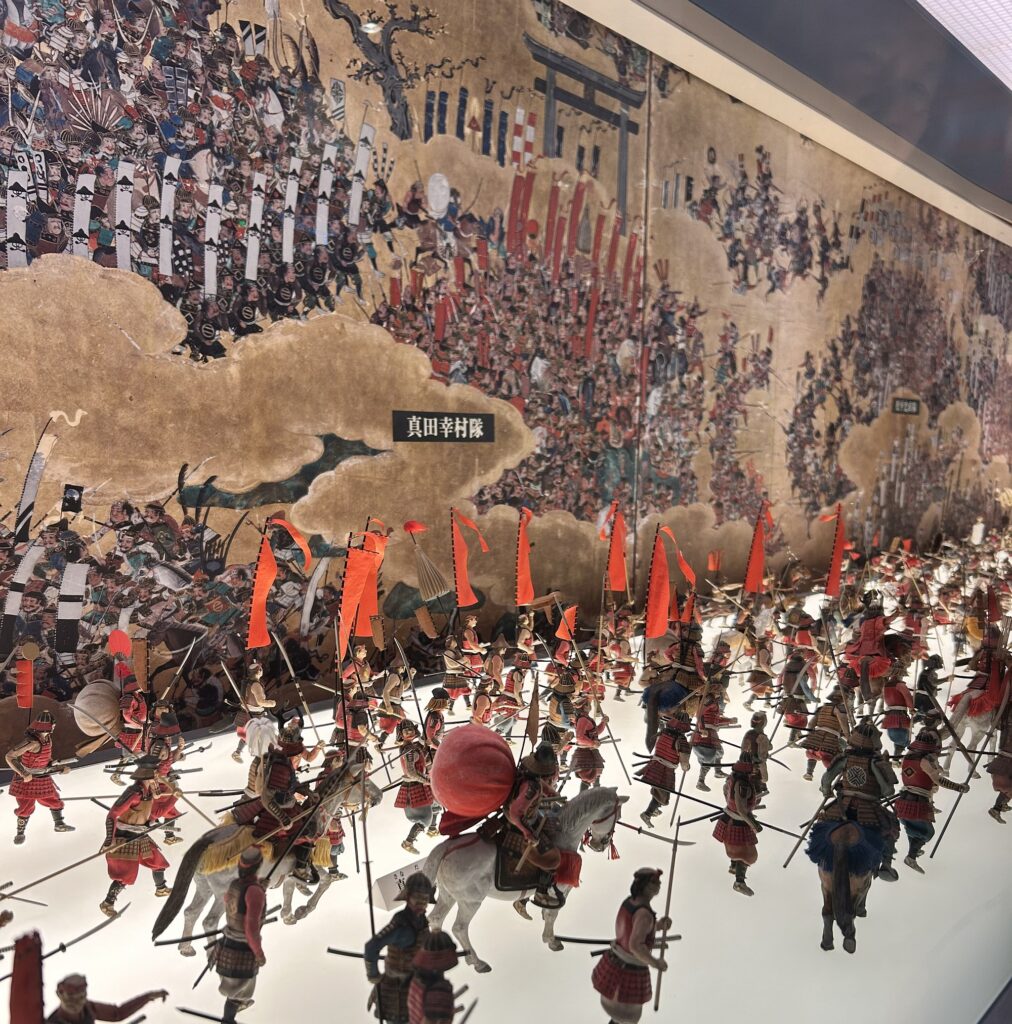
At the eighth floor, we found an open balcony spanning all four sides of the Castle Tower. From here, we gained a panoramic perspective that stretched across Osaka City. On one side, the peaceful park created a beautiful green foreground set against a looming backdrop of modern concrete skyscrapers; on the opposite side, a distant mountain loomed over the dense buildings of Osaka’s business district. While there was a small souvenir shop on the Eighth Floor, we made a mental note to check the larger selection on the First Floor before leaving.
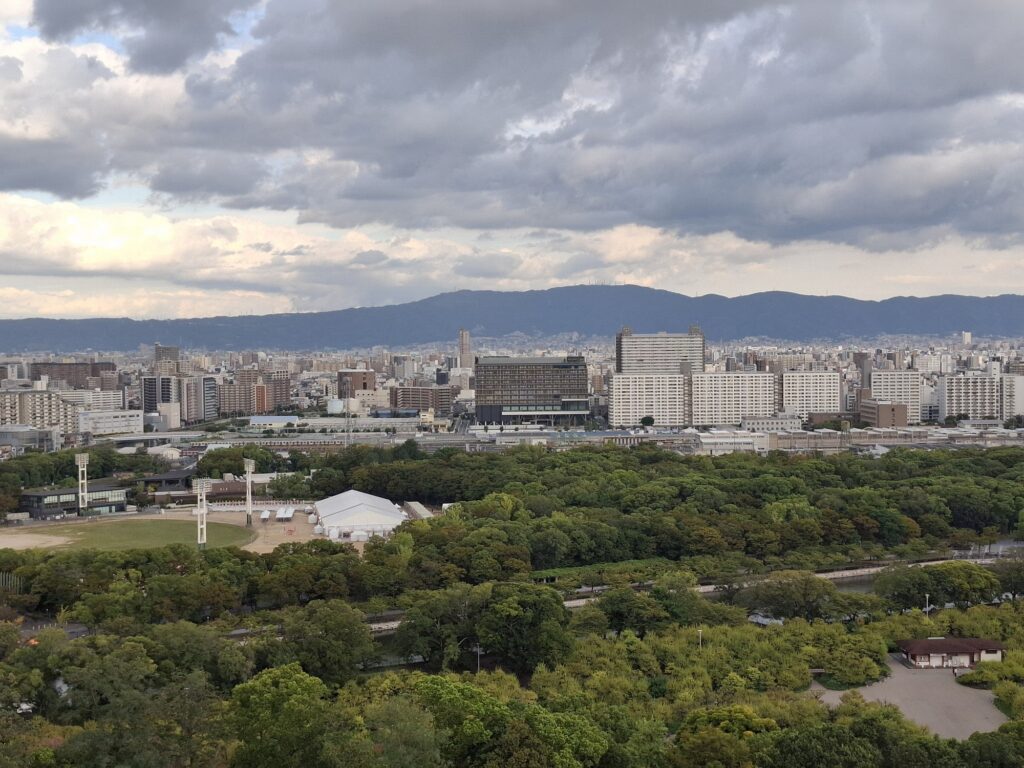
On our way out, we intentionally took a different route to further explore the massive Osaka Castle Park. Near the Sakuramon Gate, we encountered a massive stone wall that served as a formidable layer of protection. The day had grown late as we passed through the gate and walked alongside a vast, dry moat, heading back toward the train station. We wished we had more time to explore every corner of the extensive castle grounds, knowing that for now, a return visit had to be planned for another day.
Osaka Castle open from 9:00 – 17:00. Information for admission is available at their website https://osakacastle.org/
